The Future of Workplace: A Round-Up of International News Articles
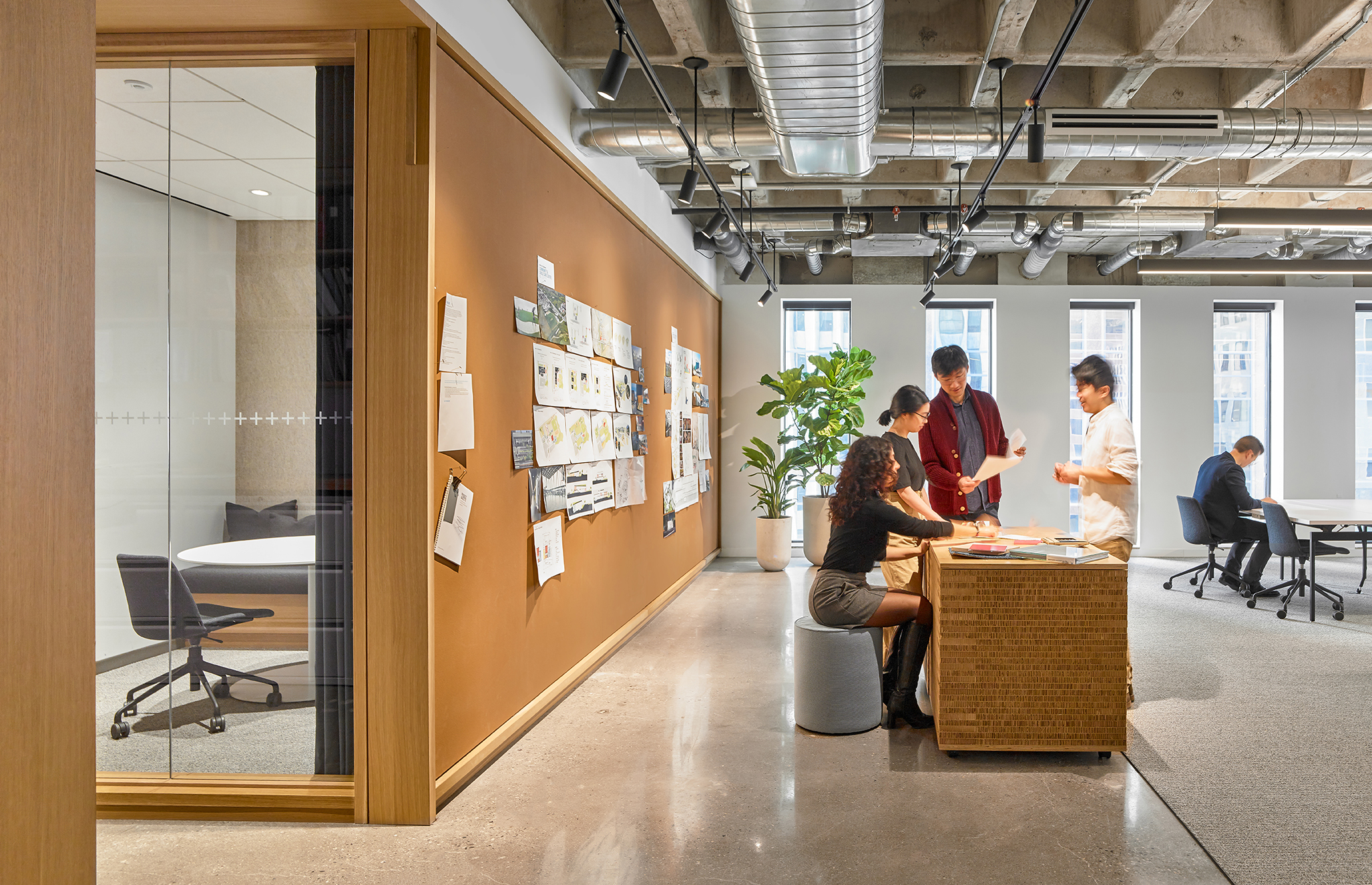

Companies are taking extra precaution as they begin phases to reopen. Fast Company tackles the question of what companies should do about office dining.
Larry Kline, Principal and Managing Director of our Miami studio, is taking a long-term approach by transforming the studio’s garage rooftop into an alfresco shaded dining space, allowing employees to safely eat together while social distancing in the open air.
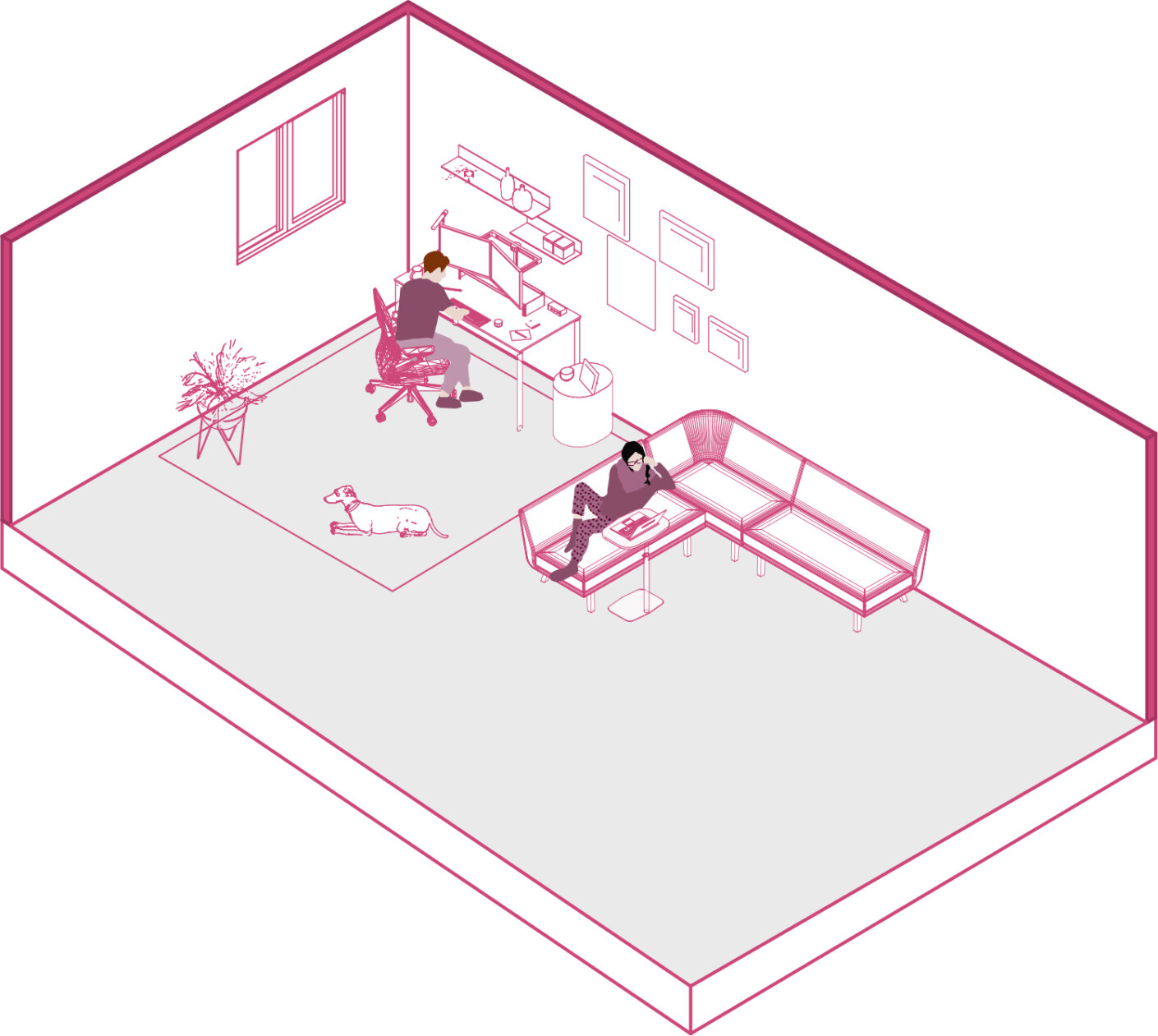
Architectural Digest explores long-term strategies to safely transition employees back to the workplace. The kitchen is especially an area of concern as a high-use communal zone in the office.
Meena Krenek, Principal and Interior Design Director of our Los Angeles studio, suggests a social area, called the Host Bar. This space can provide meaningful and safe interactions for coworkers. The Host Bar features touchless beverage and coffee machines, as well as individually wrapped snacks to meet hygiene standards. It is also large enough to accommodate physical distancing requirements and two sinks spaced well apart.
Meena Krenek, Principal and Interior Design Director of our Los Angeles studio, explores long-term design strategies for the workplace. According to Meena, a well-designed workplace will promote connections among all coworkers as fluid working becomes more common. The office may, instead, become a place of collaboration and connection, as opposed to a provider for private workstations.
“Our collective work-from-home experience has been a forced experiment for all of us, giving us insight into what we need to work most effectively. And we’ve learned that despite new protocols for hygiene and physical distancing, and the availability of ever‐improving technology to connect us, one thing has not changed: the need for places where people can engage with each other, places that provide meaning to the workplace and the energy needed to perform impactful work.”
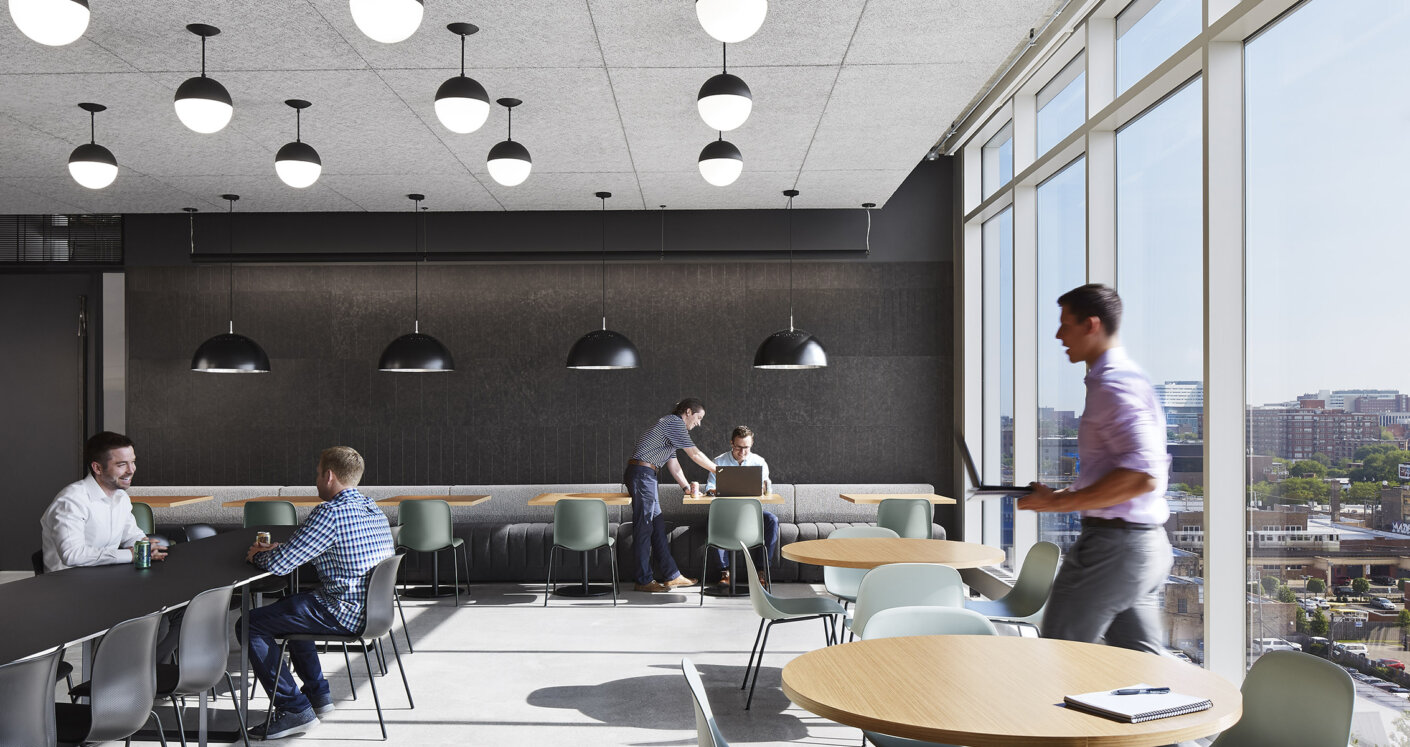
Joe Connell, Principal of our Chicago studio discusses with Employee Benefit News (EBN) about the challenges of returning back to the workplace.
“There’s a lot of issues that come into play about the design of the office,” Joe tells EBN. “Once you’re in the office, that’s the easy part because we can work out the distancing and protocols. But the hard part is making our lives bend to getting to work and making sure that the home life is covered while we are working. So much of this is becoming dependent on what our commute looks like, how much flexibility or agility we have in our family or household.”
The Architect’s Newspaper explores how an increase in remote working will impact commercial office spaces. Brent Capron, Interior Design Director of our New York studio, suggests that workplaces will have a stronger focus on wellness.
“I would love to see us rethinking: Is there an architectural model that isn’t a center-core building? It would be interesting to see if New York could start coming up with more interesting designs and bring wellness to the forefront,” Brent tells The Architect’s Newspaper. Brent also suggests that commercial real estate might convert to residential spaces to open up room for affordable housing.
Brent Capron, Interior Design Director of our New York studio and Carolyn BaRoss, Firmwide Healthcare Interiors Design Director discuss convergence in healthcare and workplace design and the lessons learned from the COVID-19 pandemic.
“Really, it’s about combining the best of all these different design disciplines and typologies to create spaces that are good for us holistically. Spaces where we enjoy spending time, where we are inspired by our surroundings and where we can seamlessly employ good hygiene to promote public health,” says Carolyn.
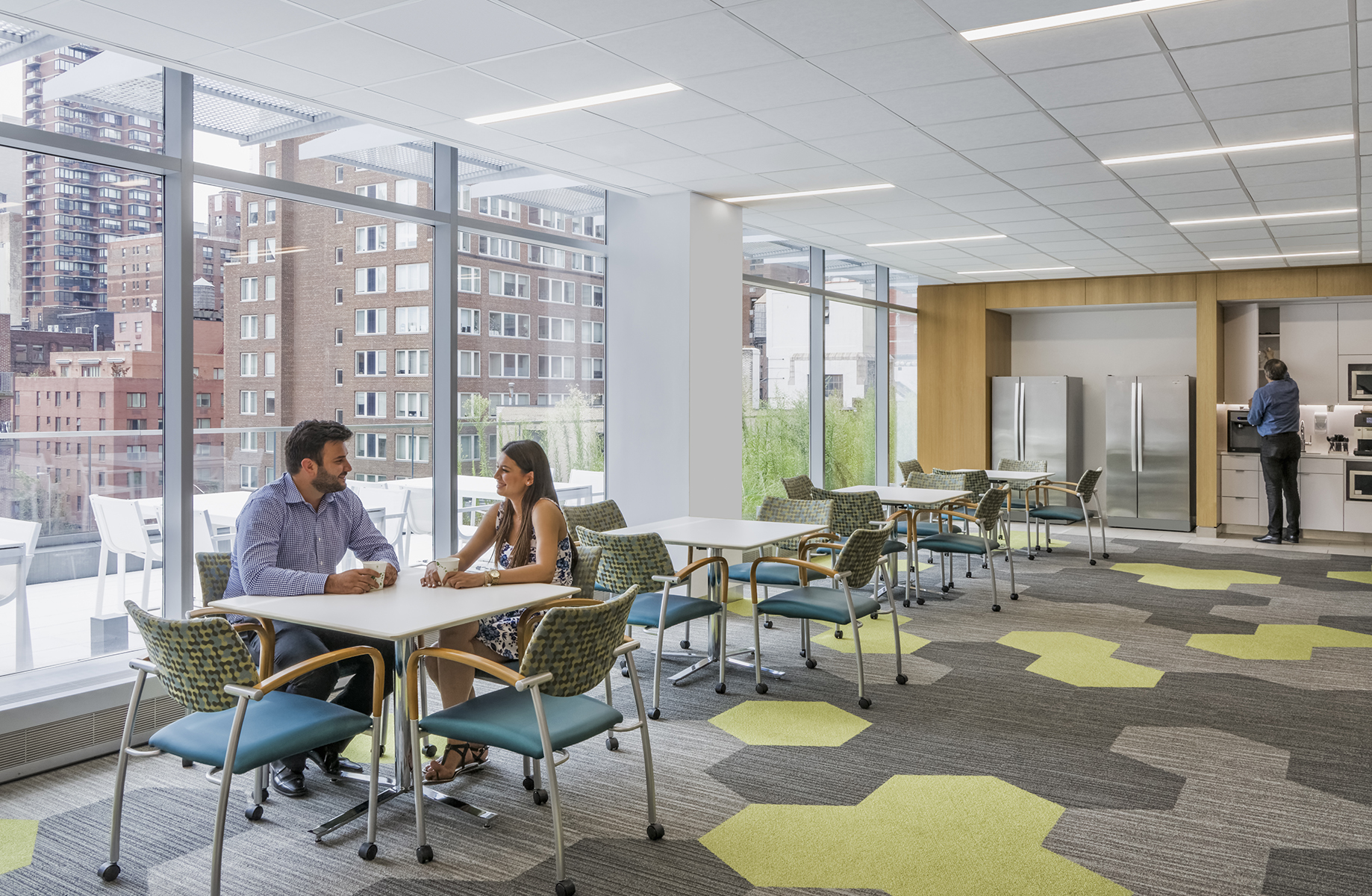
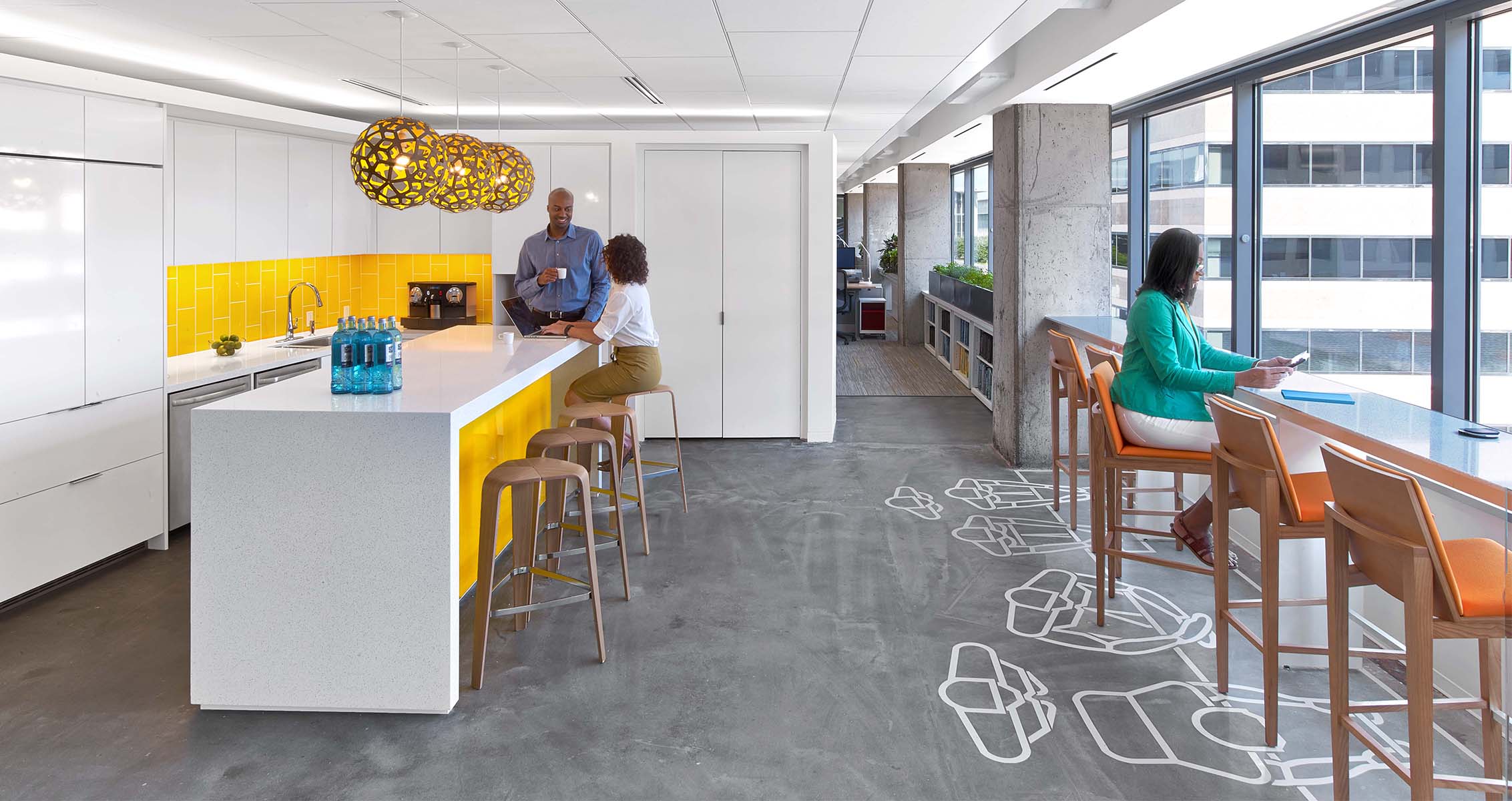
On NeoCon’s guest blog, Ken Wilson, Principal and Interior Design Director of our Washington, D.C., reflects on the value of connection in both remote working and at the office.
“The good news for designers is that we will have learned the incredible value in being together and I believe the workplace will have even greater importance than it did before,” says Ken.
BBC explores the short and long term changes in the workplace as a result of the coronavirus pandemic. In the short term, Brent Capron, Principal and Interior Design Director of our New York studio, says that workstations will show greater physical separation between colleagues. “Until we hopefully have a vaccine, having that physical barrier will make people feel more comfortable,” he tells BBC.
In the long term, workplaces might integrate elements of healthcare design, such as materials that can withstand heavy cleaning using caustic products. “You’ll see porous surfaces like natural oiled wood avoided, with a preference for stone or laminates,” Brent says. He also expects to hear more discussion about air filtration systems that use ultra-violet light. “Even though a UV system isn’t something that you should have out in the open, companies may look at heavy UV cleaning to make sure that the air is as clean as we can get it.”
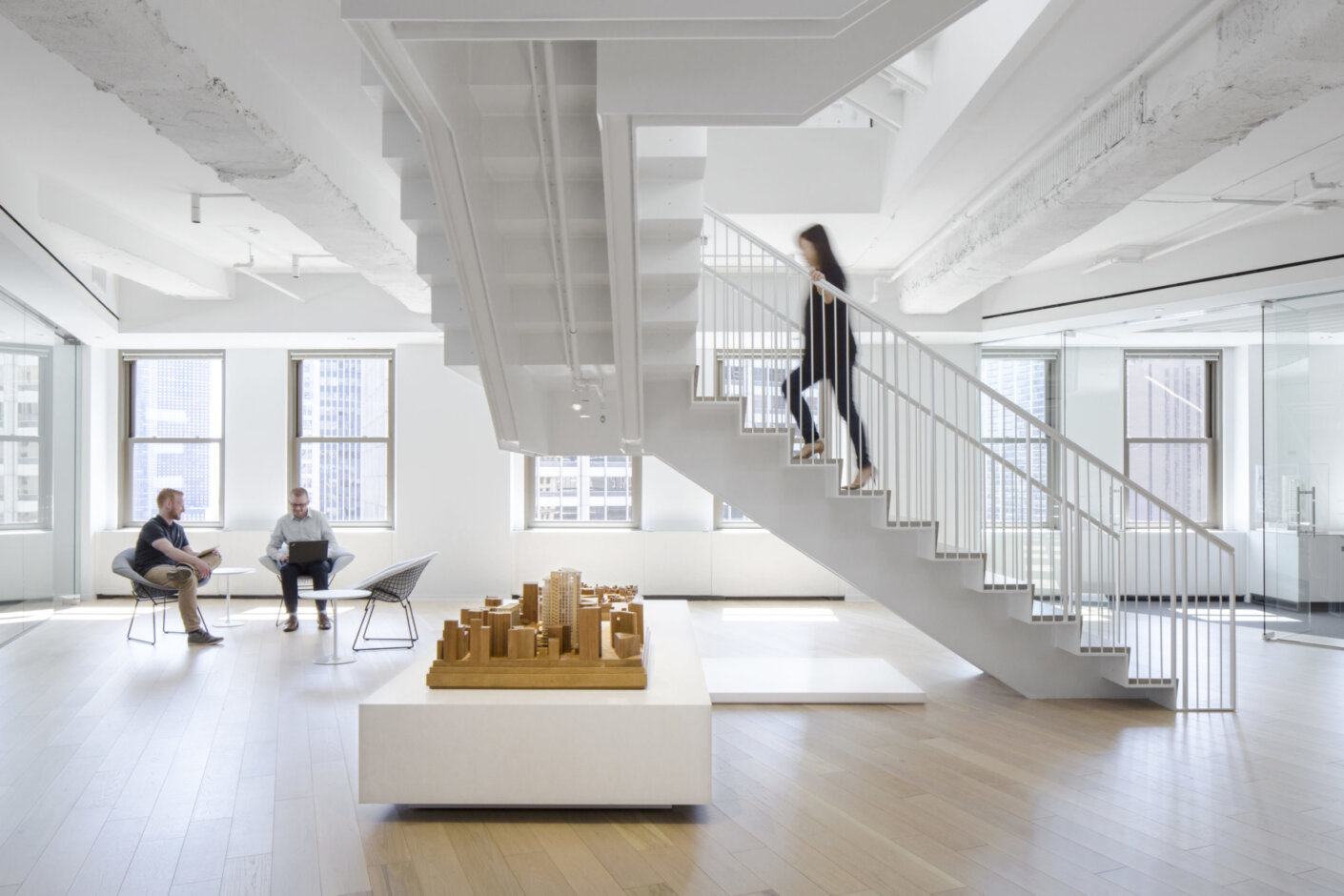
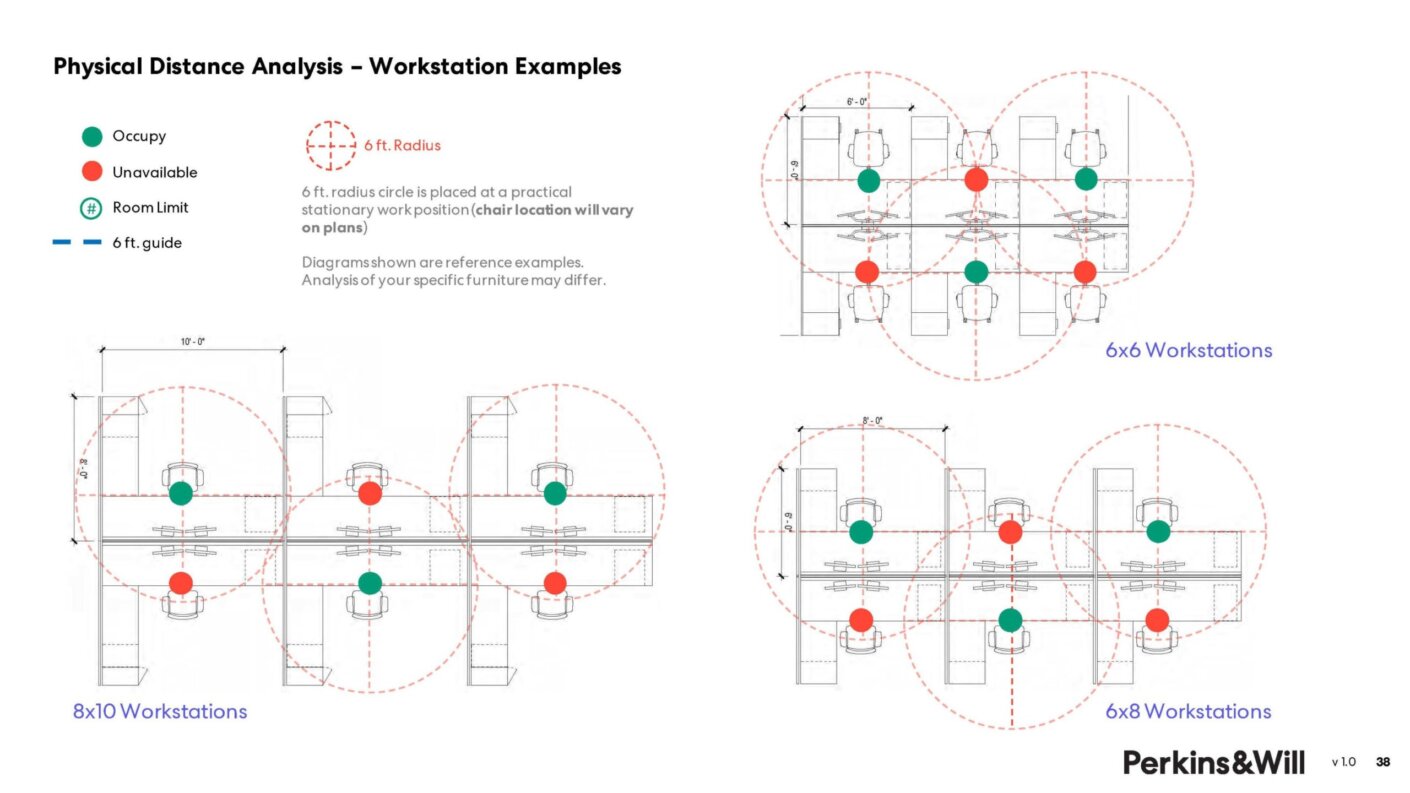
Workers are going to experience numerous changes in the workplace as a result of the coronavirus. As Michelle Osburn, Principal at our Chicago studio suggests, offices are going to need to set clear distancing protocols, particularly in common areas such as kitchens and elevators.
As offices being to reopen, we have created The Roadmap for Return, a comprehensive guide for our clients on how to safely transition back to the office. Lisa Pool, Principal and Planning and Strategies Practice Leader, says one of our key recommendations is to look critically at the space and to reinforce physical distancing with visual cues. This includes staggering workstations and work hours to limit the number of people in a given space.
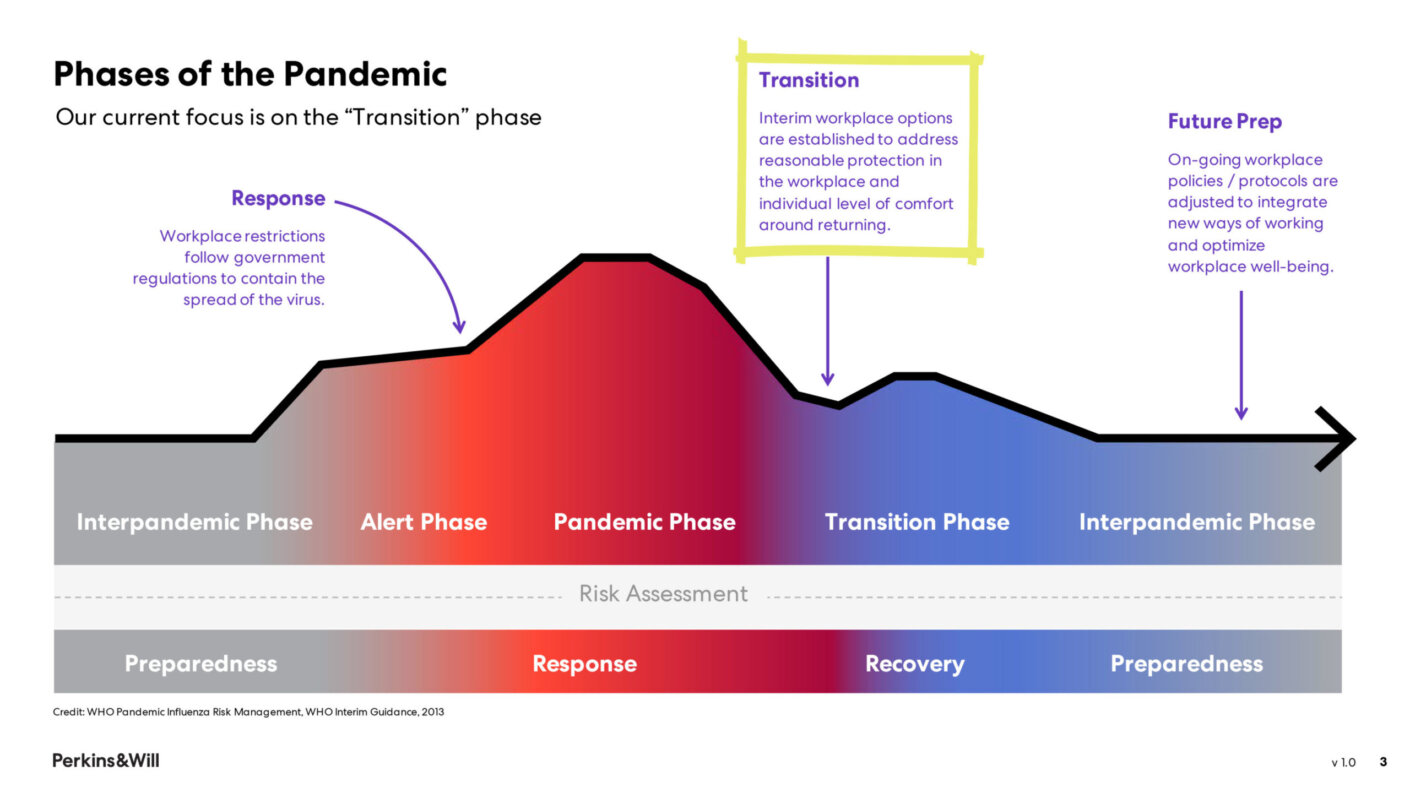
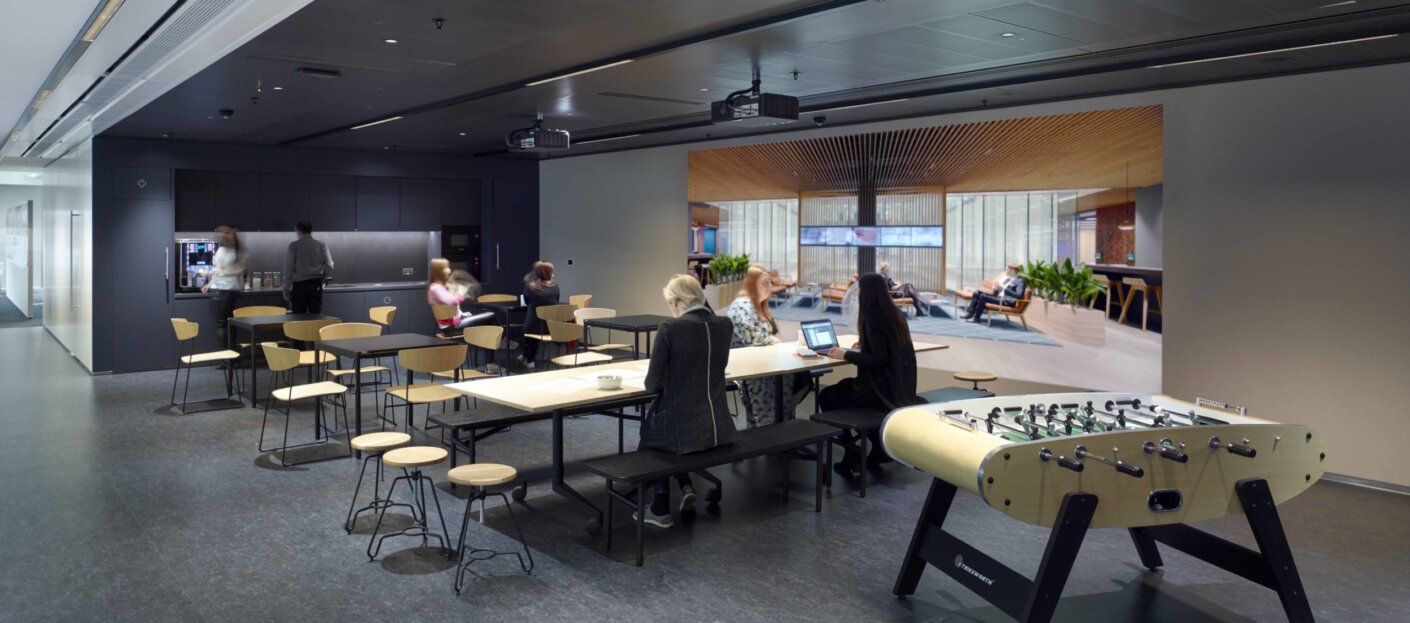
In a discussion with WIRED UK, Linzi Cassels, Principal and Interior Design Director of our London studio, recommended clients to plan a phased return to work based on office capacity and re-organizing circulation routes to promote physical distancing and implementing cleaning protocols.
Meena Krenek, Principal and Interior Design Director of our Los Angeles Studio, shares how we are learning to adapt to new ways of engaging with coworkers and clients. “I believe we are sharing different sides of ourselves. Our perception of each other seems more genuine, which makes us feel much more connected and is allowing us to be more comfortably vulnerable,” Meena tells Forbes.
Alice Hricak, Principal and Corporate Interiors Practice Leader, discusses the opportunities and challenges that working from home has created. She believes that working from home can, in fact, be productive and collaborative “when adequate home infrastructure and employer-provided tools are in place.”
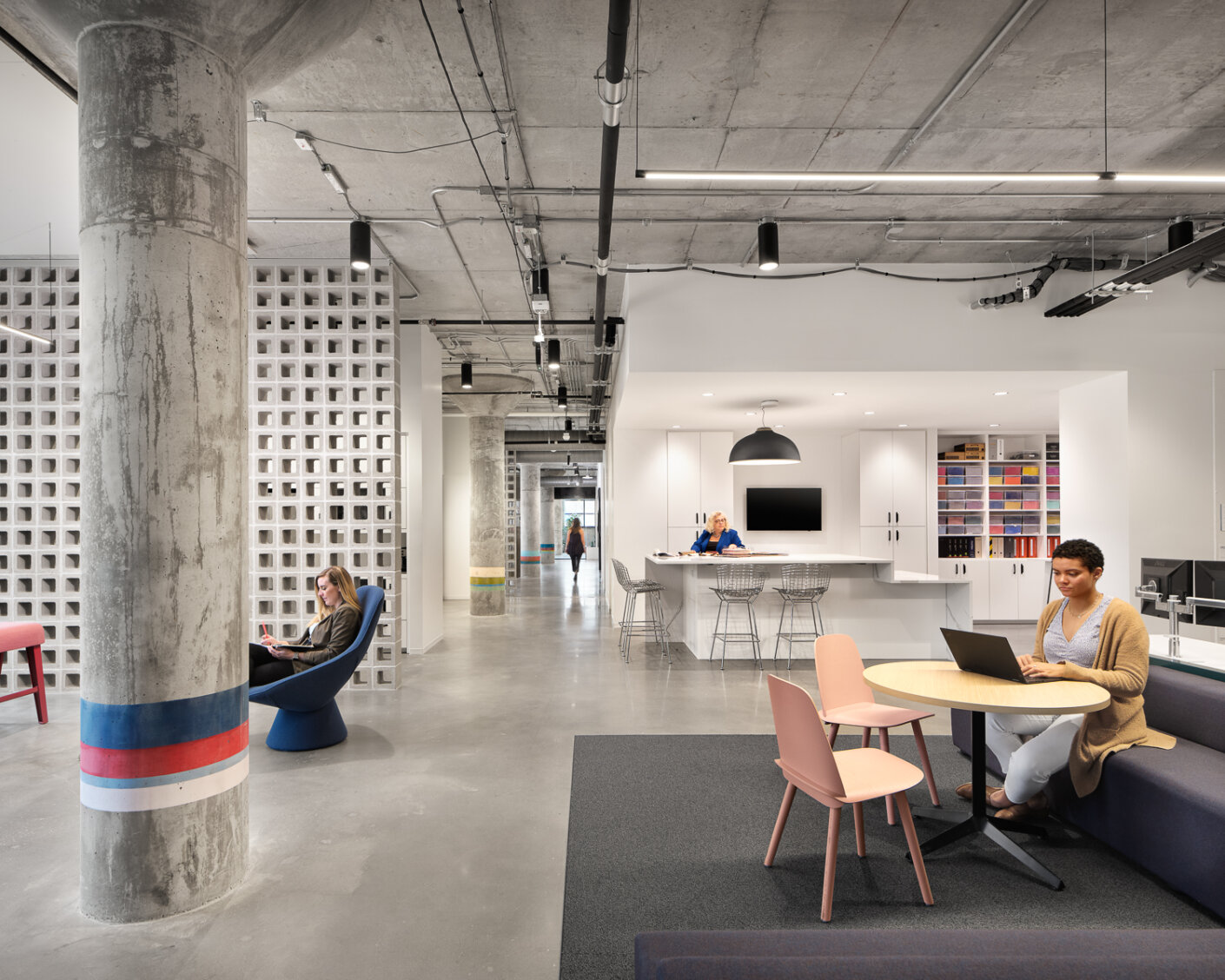
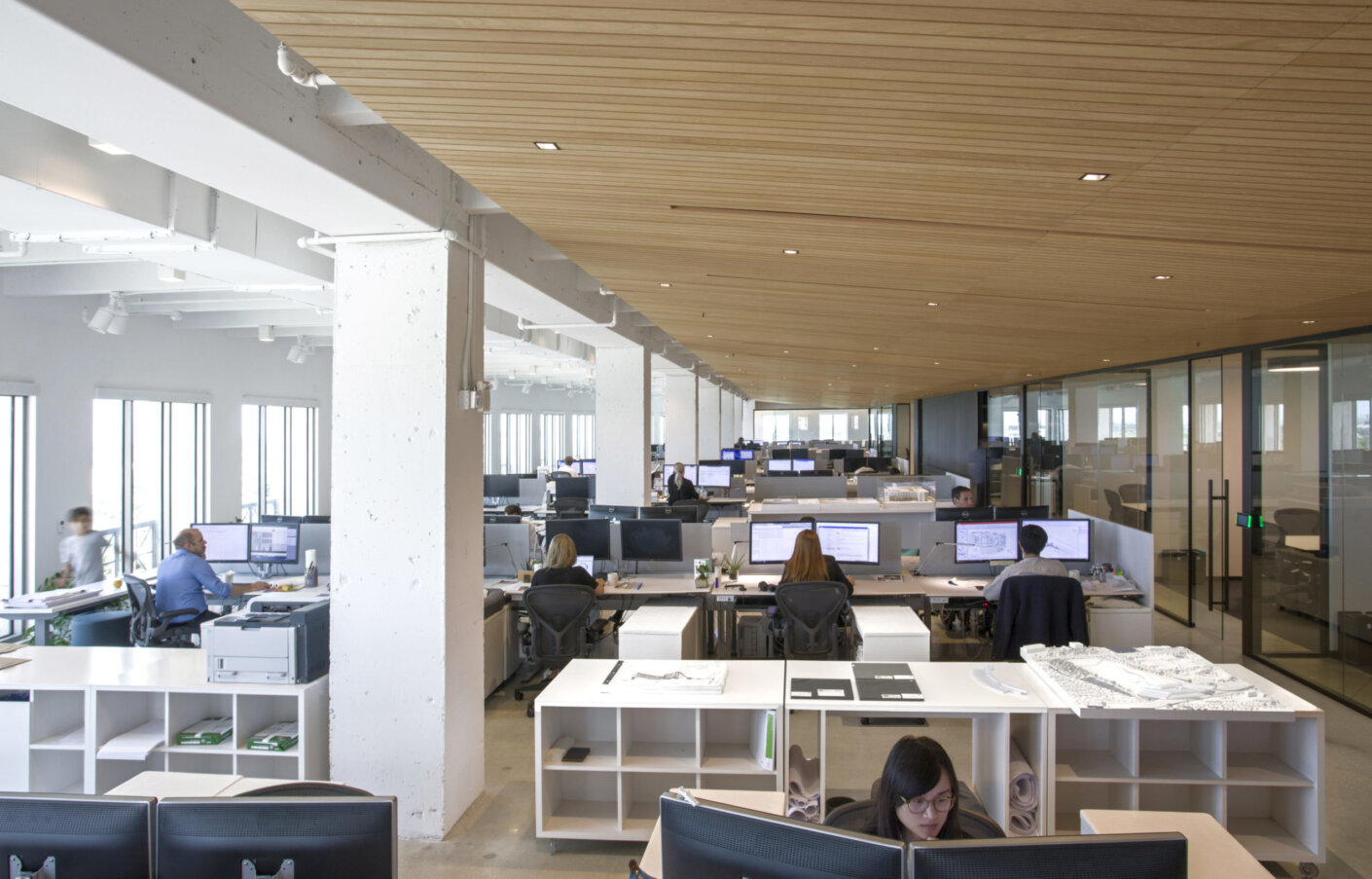
Brent Capron, Principal and Interior Design Director of our New York studio, discusses with CNBC Make It about how the pandemic will shape future workplaces and the way we work. According to Brent, corporate headquarters may eventually become a status symbol for companies that still have the budget and workplace to warrant paying rent in a major city.